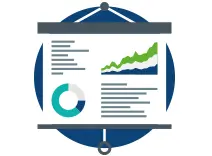
Many business professionals say that their technology, people and processes hinder their ability to deliver the best digital customer experiences that are being demanded today.
These are expensive and time-consuming problems to solve, and with the business and technology landscapes being so turbulent, as soon as a company has caught up on what customers want now, they are already on to the next thing.
Essentially, delivering great customer experiences is all about allowing information to flow freely and quickly between the customer and company. As important as they are, technology, people, and processes are just conduits for that information, and the much-hyped digital and automated channels are just new ways for customers to access it.
Efficiently storing, indexing, and processing the huge amounts of customer data that companies hold can vastly improve customer experience.
The joined-up business
To deliver the customer experiences being demanded, your contact centre’s processes, technologies, staff, and data must be aligned. The right piece of technology, the most appropriate business process, and the relevant customer and transaction data need to be immediately available to the agent or automated system that is interacting with a customer.
With limited budgets, complex technology, a lack of multi-channel options, and a lack of understanding about customer behaviour this can be difficult. A lot of the battle can be won, however, with better quality data – without replacing legacy systems and processes.
Single customer view
Having a single view means that every piece of information about a given customer is accessible by anyone who needs it, when they need it. The result is: customer-facing people can see everything your whole company knows about a given customer or prospect.
Data discovery and tagging
The first step is to scan all your databases for all the personal and sensitive data that the company holds.
Data discovery software can find this information, instantly finding and collating everything. An automatic metadata tagging process can tie all the pieces of data together so that you can quickly understand which bits of data relate to customer John Smith, for example.
Living data inventory
The goal is to end up with an indexed copy of all your data, so no matter where that data is held across your IT infrastructure, it can be accessed as if from a single location.
This gives you a portal for accessing all your data about any individual customer which can be kept up to date by regularly running the discovery and cataloguing processes on newly acquired data.
Customer-facing staff can pull all the relevant data on a customer and their transactions into whatever tool or workflow they are using. This enables your contact centre to manage multi-channel interactions without asking the customer to repeat information; route customers to the right team or person; proactively head off service issues; personalise upsell, cross-sell, and renewals offers; and identify the best customers to find more like them.











